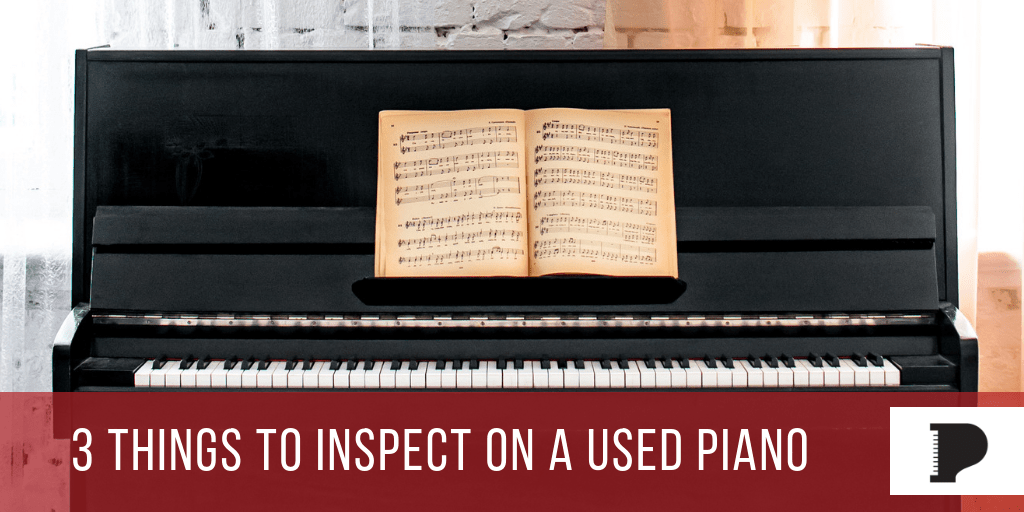These days the piano market seems to be flooded with used instruments. Today I’m walking you through three areas that you can examine yourself on these used instruments to make sure you’re investing your money wisely!
There are a plethora of ads on the internet with used pianos selling anywhere from $100 to $10,000. Usually, they all have pictures of the piano for sale, some good and some not so good. Often a customer will look at the picture and, deciding it looks nice, plunk down $500! However, this “nice” used piano may need more than just a tuning!
Used pianos may have significant wear and tear. The piano may have been loved and cared for, serviced regularly, and stored properly in a climate-controlled environment. On the other hand, it may have been neglected and fallen into some state of disrepair. While the outside case of a piano can sometimes be a good indicator of the level of care, it fails to tell the whole story and can leave critical questions unanswered.
Try to gather some information from the owner such as:
- When was it last serviced?
- Has it always been in a climate controlled environment?
Now let’s go over some things you can look for yourself to see if major components are damaged. Remember, you could spend $100.00 to $500.00 on a used piano that might need thousands of dollars in repairs! Yikes!
Area 1: The Strings
When you open the lid on an upright piano you can usually see the strings fairly easily (but you may need to remove the front board). On a grand piano, you can very easily assess the condition of the strings by lifting the lid and supporting it with the lid prop (removing the music rack is also helpful).
Look For Damage
Look for rust or other signs of corrosion. Heavy rust and corrosion can cause strings to break once the piano is in the process of being tuned. A light rust probably won’t cause a problem but rust must still be taken into account.
Area 2: The Bridge
The bridge is a strip of wood that runs all the way across the soundboard of the piano. Its purpose is to transmit the vibration of the strings to the soundboard. This is an important job since the soundboard is the microphone of the piano. I have seen pianos with bridges so badly damaged that the strings rattled horribly or the piano simply would not hold a tune. You can view the bridge on a grand piano easily, but with an upright, you’ll need to remove the front board and kneeboard. Sometimes removing the piano action is necessary on an upright (but you should not try to remove the action without the help of a piano technician).
Look For Damage
When inspecting the bridge look for cracks or missing pieces of wood.
Area 3: The Pin Block
The pin block of the piano is a critical component as this is where the tuning pins are held. If the pin block is damaged the pins will not have the required torque and cause the tuning to be unstable. On an upright piano, you can lift the lid and sometimes see the then pin block, which is made up of wooden laminations. Sometimes there is a piece of cloth or a plank of wood glued to the top making it impossible to view any damage.
Look For Damage
When you view the pin block you want to look for separation of the laminated pieces of wood or cracks running through the pin block. On a grand piano, you will need to remove the fall board/key cover (it also helps to remove the music rack as the tuning pins are underneath the music rack). Once you locate the tuning pins and have removed the fall board, look inside the open cavity between the keys and the tuning pins, and you should see the underside of the pin block. Be sure to look for cracks or damage there.
Again, these are all areas you can check yourself but a professional evaluation by a trained piano technician is always best! There can be other areas and components that could use repair or replacement, and a piano technician has the proper training, tools, and technique to do a more thorough evaluation. I’d be happy to help you with any piano inspection needs!

